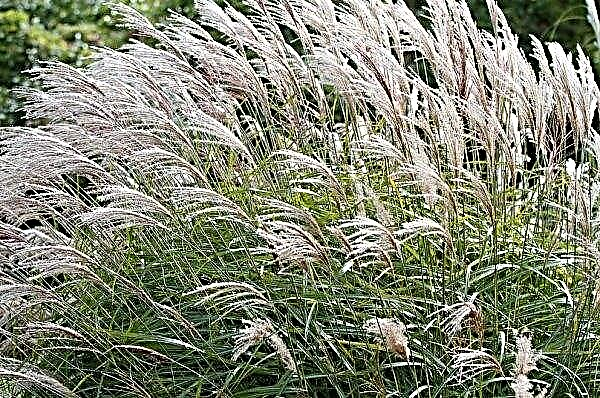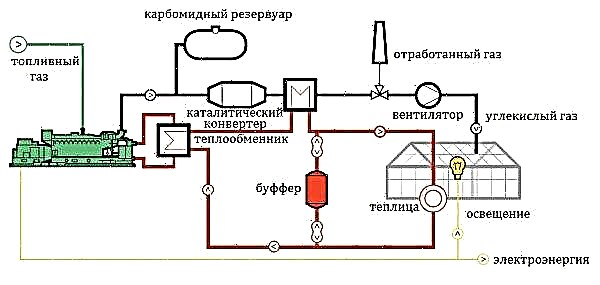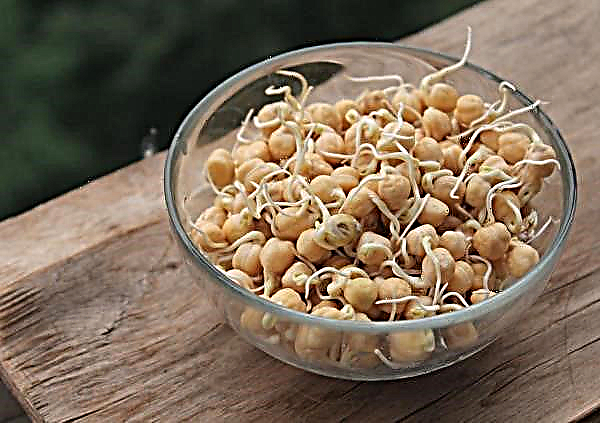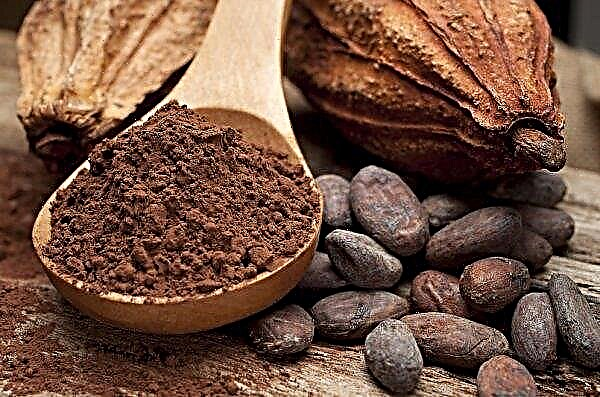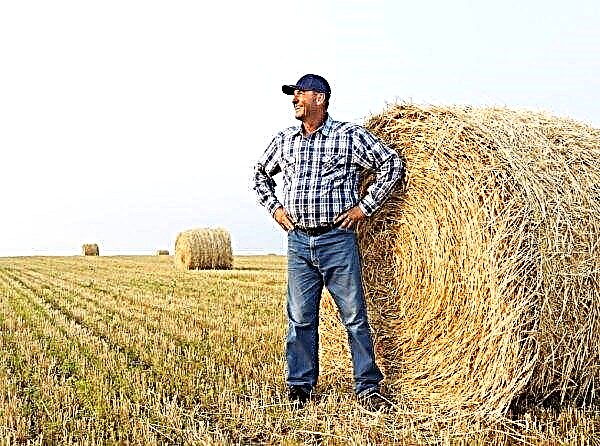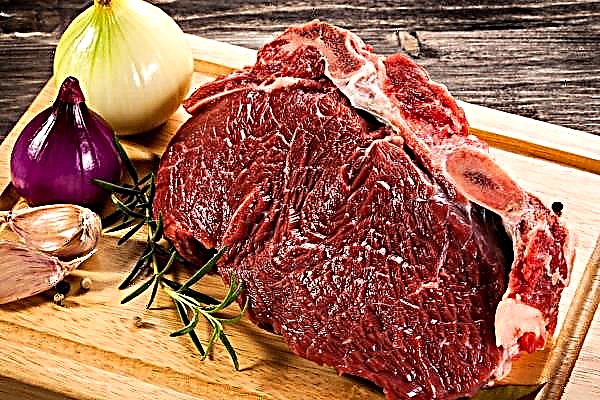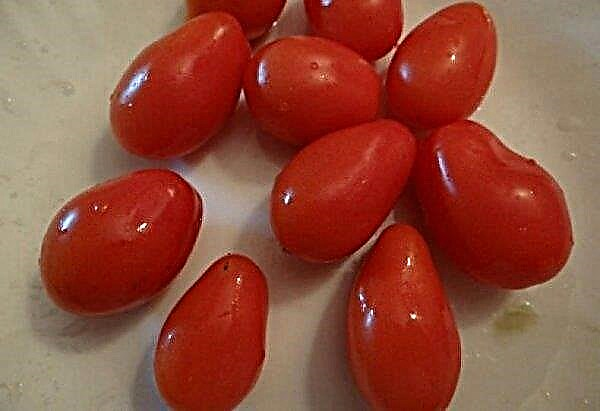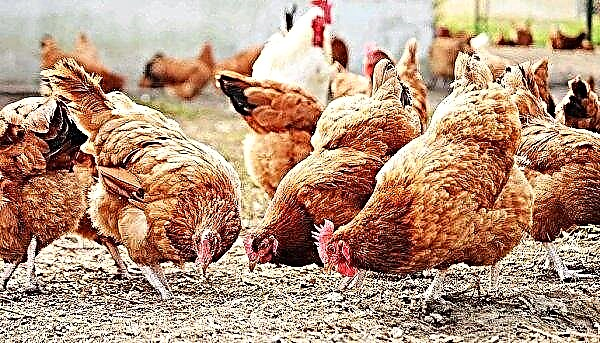Hazelnuts have many varieties, of which part is used to a large extent in industry, and another part has high decorative qualities. Hazelnuts are represented by a branchy tree up to 7 meters high, and red-leafed leaves give the landscape an excellent appearance. The culture perfectly takes root in private farms and, with proper care, gives an excellent harvest.
Landing
Having decided to plant hazelnuts in your garden, you need to choose the right time. According to experts, it is best to do this in the fall, when the earth is still quite warm and humid, and there is still a lot of time before frosts to take root. Hazelnuts, planted in open ground in early October, will fully restore the root system by spring and will be ready for the growing season.
It is equally important to choose a good seedling. Inspect the root system - it should be well developed, without dry, damaged areas. It is better to choose a bush with sleeping or, in extreme cases, bent buds. If leaves have already appeared on the shoots, you should not buy such a seedling. Please note that in order for hazelnuts to bear fruit well, it is advisable to plant at least 3 bushes of different inter-pollinated varieties on the site.
Did you know? In ancient Babylon, hazelnuts were allowed only to the nobility. Since the nut has the ability to improve mental abilities, it was believed that this is more harmful than useful to ordinary people.
Seat selection
The survival rate and further development of the plant is significantly affected by the correct choice of site for planting, light exposure, soil moisture and other factors. Hazelnuts are best grown on an even area or with a minimum slope. The culture is responsive to good lighting, which contributes to high yields. But what the plant does not like is drafts and gusty winds, so the area near hedges or, in extreme cases, not far from buildings (but not very close to them, otherwise the powerful roots will not be able to fully develop) will be the best place to plant.
Hazel loves moist soil, but is afraid of very waterlogged, wetlands, from which the root system of the plant suffers from staying. Groundwater should be no higher than 1.5 meters to the topsoil. When planting, it is better to organize a drainage layer in the planting pit.

Soil preparation
Like any fruit plant, hazelnuts love fertile soils, in particular chernozems, rich in nutrients. But in reality, such soil can rarely be found in summer cottages, especially in the middle zone of Russia it is not so common, so the soil will need to be fertilized before growing hazel. It is advisable to add about 10 kg of humus, 200 g of superphosphate and 40-60 g of potassium salt to each pit. All these components need to be mixed with a small part of the natural soil and laid on the bottom of the hole.
Also pay attention to the acidity of the soil - hazelnuts prefer non-acidic soil. Otherwise, it can be calcified by adding lime at the rate of ½ kg per 1 m². If you plant a nut in chernozem, add a little sand to its composition, which will provide better moisture and air permeability.
Landing pit
A walnut pit is prepared 2 weeks before planting. To do this, dig a hole with a diameter and depth of 70 cm. On the bottom you need to lay a drainage layer of crushed stone, chipped brick or other material. Further, up to half the height of the pit, fertilized soil is poured. In the center, it is necessary to establish a stake, near which a seedling is planted, spreading the roots, add remaining soil.

Make sure that the root neck is at the level of the soil - this will stimulate root growth and branching. After planting, the earth should be slightly tamped, and the aerial part of the bush should be cut so that 5-7 buds remain on top. The seedling is abundantly watered (5–7 l of water) and the trunk circle is mulched with manure, compost, sawdust to preserve moisture longer.
Note that hazelnuts need space. If you plan to plant several plants, keep a distance of at least 4–5 meters between the pits. If you want to create a hedge from plants, the interval between plantings can be reduced to 2-3 m. For these purposes, hazelnut red-leafed is great.
Important! Mulch needs to be laid in such a way that it does not come into contact with the stem, otherwise the bark may begin to sing.
Subtleties of care and maturity
Choosing a good seedling and planting a plant in compliance with all the rules is only half the battle. So that hazelnuts give a good harvest, are not sick and become a worthy decoration of the landscape, the owners should follow some rules of care.
Watering
Earlier it was said that hazelnuts love moist soil. It is watered infrequently, but abundantly. For the entire growing season, about 6-7 waterings will be required. The first is carried out after flowering ends, then 1 time in May, 2 times in June-July. The last watering is carried out in the fall, when the fruiting period ends and the foliage falls. This is the so-called moisture-charging irrigation, which will help the bush to survive the frosts in the future.

You need to prepare for watering hazelnuts in advance - to collect water in buckets so that it settles a little and warms up. The volume of single watering of each shrub is 40-50 liters. If the summer turned out to be very arid, the dose can be increased. For watering adult plants older than 5 years, a single rate of water consumption per 1 bush can be doubled. After each procedure, it is advisable to loosen the soil and lay a new mulch.
Important! In June-July, hazelnuts form the generative organs of the crop, which will be next year. At this time, the plant is especially in need of watering.
Fertilizer selection and top dressing
Fertilizing the soil helps to significantly increase the growth, productivity of hazelnuts and improve the quality of the fruit. Most of all, culture needs phosphorus and nitrogen supplements. At the same time, overdoses are also dangerous, as they contribute to the thickening of the walls of the walnut shell, which reduces the volume of the kernel itself.
During the laying and formation of fruits (spring-summer), hazelnuts especially need fertilizers. During these periods, feeding with urea or ammonium nitrate is good - 100 g of the product are diluted in a bucket of water and poured into the furrows dug around the trunk circle. It is good to carry out a single top dressing with organomineral fertilizer "Universal" - it is better to carry it out after rain or heavy watering.
 At the beginning of fruiting, under the bush you need to make organic - 10-15 kg of humus and 150 g of Nitroammfoski or Kemira.
At the beginning of fruiting, under the bush you need to make organic - 10-15 kg of humus and 150 g of Nitroammfoski or Kemira.
When preparing hazel for winter, 1 glass of wood ash is added to the trunk circle at the same time as digging - this will help increase yield for the next season. One of the best means for feeding hazel is slurry, which fertilizes the soil before the start of the growing season. It is prepared as follows: manure with water is diluted in a barrel in a ratio of 1: 3 and left for 2 weeks for fermentation. Periodically stir the mixture. The result is a concentrated solution, which must be diluted again with water in a ratio of 1: 2. An adult bush requires about 3-4 buckets.
Winter preparations
The fruit ripens in late August - September. Timing may vary by grade. When the whole harvest has already been harvested and leaf fall has ended (end of October), you need to prepare the plant for wintering, creating favorable conditions.To make the plant form a lush shrub, in the center cut extra shoots, and the lateral branches are bent to the sides and fixed with twine or wire.
In this case, no more than 10 main trunks are formed, which will become the basis of the bush. In small areas, owners sometimes prefer to give hazelnuts the shape of a tree. In this case, you need to select one of the strongest main trunk, and cut off the remaining side branches.
 In young plants up to 5 years old, damaged, broken branches are removed during this period, but most importantly, they form a crown.
In young plants up to 5 years old, damaged, broken branches are removed during this period, but most importantly, they form a crown.
If the plant has already reached 5 years of age, it must be thinned out, thereby ensuring good illumination for ripening. In addition to weak, painful branches, they are pruned by those that let their growth in the center of the bush, as well as young, very thickened shoots and root offspring.
If hazelnuts have already reached the age of 15–20 years, in the fall you can conduct anti-aging pruning to improve fruiting. You need to cut a few old trunks at a height as close to winter as possible. Next year, it will be necessary to cut a few more trunks, and shorten the young shoots for further branching.
After pruning, all biological debris is removed from the site, including fallen leaves, which can become a haven for pathogens. Then dig the soil around the perimeter of the crown and make fertilizers. The shrub is treated with protection against diseases and pests and carry out water-charging irrigation.

Hazelnuts are cold-resistant crops, especially when it comes to hybrid varieties. But young seedlings up to the age of 4 are still better to cover. To do this, use spunbond, burlap or tilt the bush to the ground and cover it with spruce branches, and in winter they sprinkle it with snow.
Pests and diseases
Throughout the development of hazel, it is necessary to constantly monitor so that the plant does not overtake diseases or pests, and if these are identified, it is urgent to take measures to eliminate them. Many hazelnut diseases can be transmitted to neighboring crops in the garden, so timely treatment is very important in this case.
The most common diseases include the following:
In addition to diseases, insect pests pose a significant threat to hazelnuts. To determine the appearance of the "enemy", as they say, you need to know it in person. On the Internet you can find many photos and descriptions of pests, but the most dangerous are such as:
As a preventive measure, it is necessary to follow the rules of plant care: thin out the bush in time so that the thickening does not create favorable conditions for parasites, provide good nutrition, which gives the plant immunity to diseases. It is useful to carry out spraying with biological products. For the prevention of fungal diseases, processing hazelnuts helps "Metarizine"held in early spring and late autumn.
When preparing hazel for wintering, soil treatment with a solution of copper sulfate or Bordeaux fluid is useful. To avoid insect pests in the bush, you can use tools Kemifos, Inta-Vir and so on. Moreover, it is desirable to alternate them so as not to cause addiction in insects.
Did you know? The optimal dose of hazelnuts that benefits the body, — no more than 50 g per day. Exceeding this amount can lead to cerebrovascular spasms, headaches.
Collection and storage of fruits
The ripeness of nuts can be determined by the state of the upper shell: it turns yellow or brown, depending on the variety, while the nut itself is easily removed. To collect the fruits, the tree needs to be shaken, but often the ripened fruits themselves crumble. If some of the nuts remained on the branches, they are removed manually. With good care and favorable weather conditions from one bush you can collect up to 15 kg of large wholesome fruits.
After collecting, the nuts are dried, spreading a thin layer on paper. Drying should be carried out in a dry, well-ventilated room, with a moisture content of not more than 15%. In fine weather, you can put out the fruits to dry in the sun. Then they are peeled or left in it. It is better to store nuts in fabric bags, placing them in a place protected from the sun. If the fruits are initially well dried and peeled, the crop can be preserved for 1 year, and the untreated kernels can retain their palatability for up to 3 years.

Hazelnuts are rightfully considered one of the most popular nuts in the world. Possessing a pleasant aroma and delicious taste, it is not only a favorite gourmet nut, but also actively used in the confectionery industry. Resistance to different climatic conditions and the minimum requirements for care allow you to grow hazel not only in the southern but also in the northern regions, where severe winters reign.


